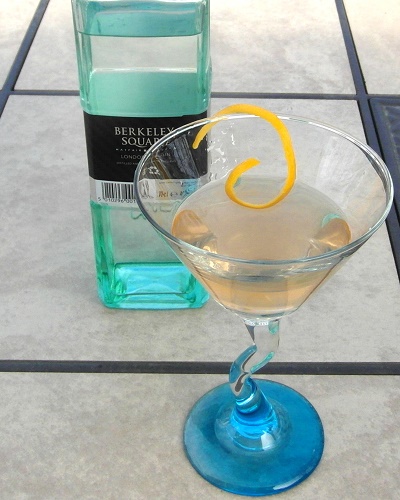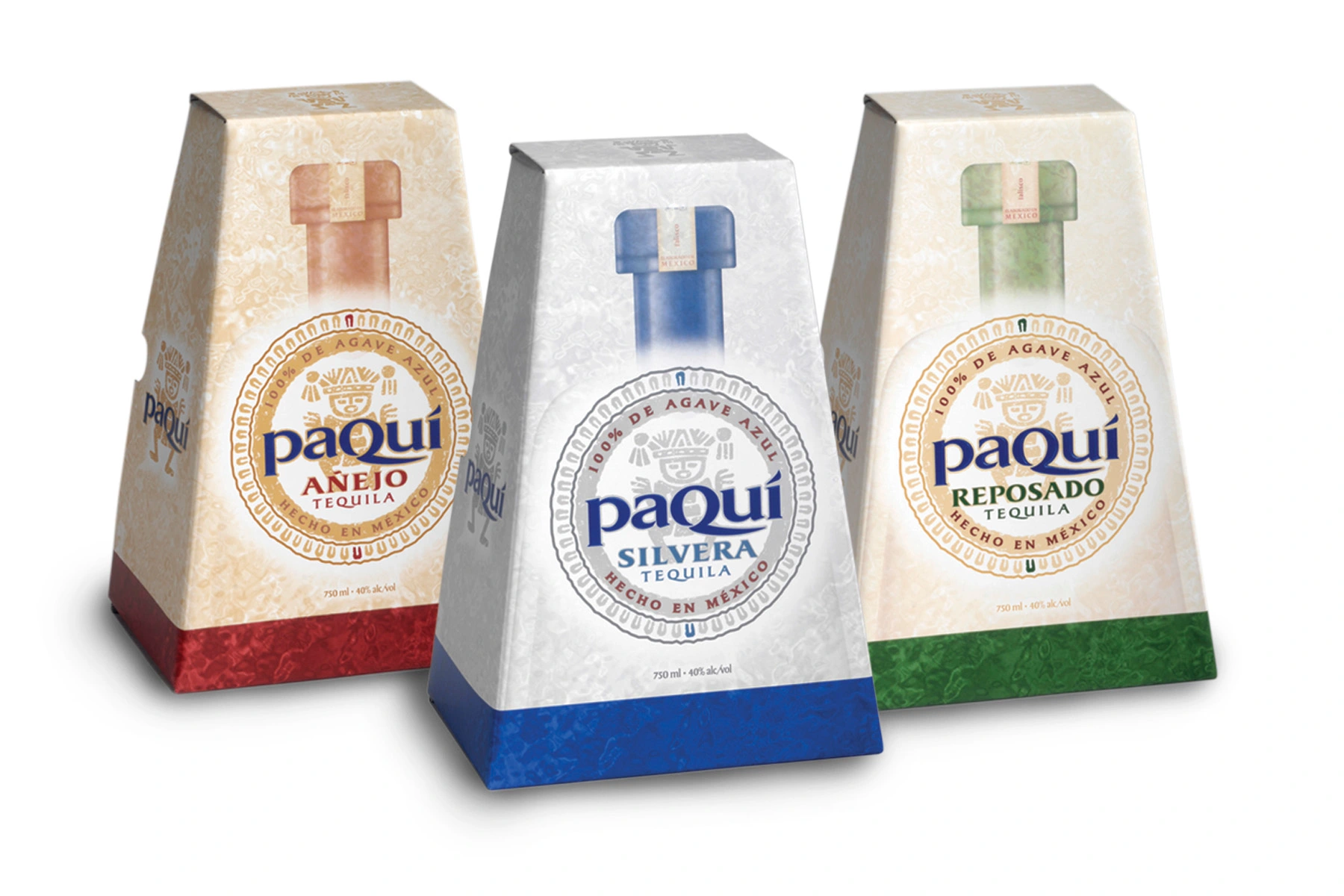Highland Park 40 Year Old Whisky
Whisky Review: Highland Park 40 Year Old Single Malt Whisky 85.5/100
a review by Chip Dykstra (Aka Arctic Wolf)
Posted on April 2, 2011
This review is based upon a small sample provided to me from the personal collection of J. L. Wheelock, who is part of the Beam Global team here in Alberta. The sample was smaller than my normal 200 ml minimum sample size, and the reader should be cautioned that I was not able to give the sample my normal rigorous tasting regimen of five independent tasting sessions. Instead I completed two tasting sessions of the sample and completed my review on that basis.
The Highland Park 40 year Old is a relative newcomer to the Highland Park portfolio having been released in 2008 as the premier production whisky in the Brand line-up. This is not a one-off bottling which will disappear when the stocks run dry, but instead an extremely limited yearly bottling. Like the Highland Park 30 Year Old Whisky, this 40-year-old is matured in refill sherry oak casks. The aim is to ensure that the long-term aging does not cause the oak to dominate the whisky in a deleterious manner.
This is a rare treat to be allowed to sample a 40-year-old whisky. The effects of the long-term aging in oak should reverberate through the whisky, and at 48.3 percent alcohol by volume this spirit will be a challenge to approach. Thus, it is with a little trepidation that I begin.
 In the Bottle: 4/5
In the Bottle: 4/5
Although I was not given a full bottle of the Highland Park 40 Year Old for review, I was able to use this nice photo of the bottle I found on the Highland Park Website. Permission to use this photo was provided by the above mentioned J. L. Wheelock.
As you can see, the bottle arrives in an attractive dark oak display box. The whisky oozes class in a new decanter style bottle that retains the tradition of the Highland Park image, but brings this style forward with a new feeling of luxury. (The price point of this whisky in my locale is approximately $1850.)
In the Glass 9/10
I poured a portion of the sample into my glencairn glass and had a nice long look at the whisky. It was a little darker (and as I indicated earlier) a little more intimidating than the previously reviewed 30-year-old. I would describe the visual of the whisky as a rich mahogany with a noticeably heavier or more oily appearance than one would normally associate with whisky. The tilt and turn of my glass revealed moderately thick leg-like droplets which barely crawl down the surface of the glass reinforcing the indications of a more oily consistency.
In a wonderful display of duplicity, the initial aroma from the glass was not nearly so intense as the 30-year-old had been. I received some of the same notes of willow and peaty smoke, but the whisky seems to have some more sweetness on the nose which is serving to temper the aromatic assault which was present in the younger whisky. (The intimidation factor has been diminished, but only by a little.)
In the Mouth 50/60
On the palate, the Highland Park 40 year Old Whisky is a bit of an enigma. On one hand it seems to carry more individual flavours and more balance than I noticed in the Highland Park 30. Yet, it also seems… diminished somehow. The oak flavours and rich Orcadian peat are not nearly so penetrating nor as assertive as they were in the somewhat younger expression. I taste more sweetness when I chew on the whisky. It is a fruity sweetness stemming from flavours of prunes and dates…. yet again, the sweet flavours seem to be less than they should. A certain sap-like character is apparent as well, and at times this tannin/sap seems to dominate the other flavours into a submissive posture. I feel strongly that this may be what is causing the enigmatic nature I am encountering.
My conclusion is that perhaps the oak barrels have reached the peak of their ability to improve the whisky at some point in the past. The vanillans in the wood are almost spent, and the sweeter honey notes are slowly being replaced by punky spent oak flavour and tannin. The whisky has began to lessen, and perhaps it should have been captured before the barrels began to fade.
The Highland Park 40 Year Old is still very good, but for me it does capture the glory of the younger expressions.
In the Throat 12.5/15
It is in the finish that the tannin and sap I noted earlier seems to be revealed most fully. My mouth is left heated, and the top of my throat feels the heat of the spicy oak. A beguiling sweetness at the end saves the finish from crashing. I must admit I am somewhat bewildered by the contrast and the enigma that is the Highland Park 40-Year-Old Whisky.
The Afterburn 9/10
In the many reviews I have read, the very oldest whiskies always seem to score lower than their younger siblings. Yet, these whiskies are prized by connoisseurs and collectors and are sold at prices far in excess of any rational calculation of their real cost. My reviews of the Highland Park Whiskies yields a similar pattern. In an attempt to rationalize, I gave this phenomena some deliberation, and I believe I have come to an explanation of sorts which helps me to place the Highland Park 40 Year Old Whisky into its proper context. Let me begin with a little research which at first glance might seem unrelated.
According to Canadian Archeologist Bruce Trigger:
The ability to expend energy, especially in the form of other people’s labour in non utilitarian ways, is the most basic and universally understood symbol of Power. (See footnote at bottom)
This statement was made in reference to monumental architecture, structures whose practicality is dwarfed by their presence. These structures serve to remind everyone of the power of the person responsible for their completion. The oldest surviving examples of these structures is the ancient pyramids of Egypt which serve to illuminate the power of the pharaoh much more vividly than any of their surviving histories can.
I believe we have a similar symbolism in the world of fine spirits which is associated with what I shall call, Monumental Spirits. These are spirits which are aged for 30, 40, 50 years and more and which are priced extravagantly such that they become a pure luxury product.
Owning one of these monumental spirits is not about having good taste, or about appreciating the finer nuances of balance, or even a reflection of a considered opinion regarding quality. Owning a monumental spirit symbolizes the powerful idea that you believe that you are worthy of this monument. In might even be argued that enjoying a 40 or 50-year-old whisky is as close to drinking the same nectar as the gods drink that we mortals can aspire to.
The Highland Park 40 year Old Whisky is such a monumental spirit. Its price is far out of line with its utility as a whisky; but its presence on a consumer’s shelf serves a far greater purpose for its owner than as a mere whisky. Its presence illuminates its owner as a connoisseur, and it lets the select few who are allowed into its presence know that they are in the presence of something very special. But more importantly, the presence of such a monumental whisky allows those who see the whisky on its owner’s shelf to know that they are in the presence of not only something very special, but also someone, very special! The Whisky has become a symbol of worth which is claimed by ownership.
You may read some of my other Whisky Reviews (click the link) if you wish to have some comparative reviews.
________________________________________________________________________________________________
As always you may interpret the scores I provide as follows.
0-25 A spirit with a rating this low would actually kill you.
26-49 Depending upon your fortitude you might actually survive this.
50 -59 You are safe to drink this…but you shouldn’t.
60-69 Substandard swill which you may offer to people you do not want to see again.
70-74 Now we have a fair mixing rum or whisky. Accept this but make sure it is mixed into a cocktail.
75-79 You may begin to serve this to friends, again probably still cocktail territory.
80-84 We begin to enjoy this spirit neat or on the rocks. (I will still primarily mix cocktails)
85-89 Excellent for sipping or for mixing!
90-94 Definitely a primary sipping spirit, in fact you may want to hoard this for yourself.
95-97.5 The Cream of the Crop
98+ I haven’t met this bottle yet…but I want to.
Very loosely we may put my scores into terms that you may be more familiar with on a Gold, Silver, and Bronze medal scale as follows:
70 – 79.5 Bronze Medal (Recommended only as a mixer)
80 – 89.5 Silver Medal (Recommended for sipping and or a high quality mixer)
90 – 95 Gold Medal (Highly recommended for sipping and for sublime cocktails.)
95.5+ Platinum Award (Highest Recommendation)
________________________________________________________________________________________________
Footnote Citation: Trigger Bruce G. “Monumental Architecture: A Thermodynamic Explanation of Symbolic Behavior,” World Archeology, Vol 22 No. 2 (Oct. 1990) 119-132
________________________________________________________________________________________________








Dan said
Good Afternoon Chip,
Regarding your theory on monumental spirits: I had a discussion on this with my wife – who is a cultural anthropologist by training – and while she agrees with you in principle, she feels that you may have conflated two different, yet supporting arguments…
1) monumental architecture / expenditure of labour as a symbol of power [i.e. the whisky is impressive because of the effort it took to create it (both the process through which it was initially distilled and the effort / labour inherent in storing / aging it] = an inherent value which may or may not be overstated; and
2) a social narrative construction of self on the part of the consumer through the act of owning such a product. By buying it, people create a certain image of themselves that has nothing to do with the actual whisky (which, as you’ve said, may or may not be all that good when compared to younger expressions), but with the cost associated with its purchase and the socially prescribed meaning that is associated with a) having the money to afford it, and b) the desire to own it, and what these say about them as a person.
Do you think it is the producer or consumer that is creating the concept of a momumental spirit? Or is it a two-part system, the producer creates and markets the product as a monumental spirit (intentionally or otherwise), and the consumer builds on the image by acquiring the spirit? I guess we could also associated not only age (30, 40, 50 year old), but also availability, with this concept, as I think it would equally apply to expressions from Port Ellen, Rosebank, Brora, St. Magdalene, or any other closed distilleries.
Thanks for the reviews of all the Highland Park expressions, Chip! As always, I enjoy perusing your site!
Cheers,
Dan
Arctic Wolf said
Hi Dan
I believe your wife is right on track with her analysis.
I would need to get out some of the literature and study it better; but I do remember (from my rather meager readings on ancient societies) that alongside the practice of building monuments (which is what the kings and rulers like to do) the ‘elite classes’ in these societies, (the priests and wealthy landowners) would strive to possess ornate jewelry, and other trappings which demonstrated their wealth and status to the rest of the populace. These ornate trappings would typically be made by master craftsman, and although these items probably had no utilitarian value for survival, the elite classes would nevertheless cause the expenditure of many hours of highly skilled labour just to create them. The ability to cause the expenditure of such highly skilled labour for the sole purpose of these ‘trappings of nobility’ is in my mind a similar phenomena.
What I am calling the ‘monumental spirit’ is probably much closer in concept to the creation of ornate jewelry than it is to the creation of Monumental Architecture. The possession of these ‘trapping of nobility’ set the Noble owner apart from the rest of the masses, and visually told those around him (or her) how important he or she was, and as your wife indicated also reflected the owner’s desire to create a superior image of himself (or herself). In essence the nobleman needed to reassure himself that he (or she) really was better than those around him or her and therefore deserved the status of Nobility (if that makes sense).
Although it was through my readings of ancient cultures that I came across a description of this phenomena, I do believe the practices described are still very applicable in today’s culture.
As for your question of who creates the concept of the ‘Monumental Spirit’, the consumer or the producer? In my mind it is primarily the consumer who creates it, and primarily the producer who exploits the consumer’s construct. We as humans seem to have an innate need to say “Look at me, I am important!”, and being able to demonstrate this viscerally to others has an effect almost like a drug. A smart marketing person will take advantage of this impulse. I believe we create our own monuments (or ornate jewelry) to set ourselves above the masses, and producers just set about giving substance to those creations.
BTW: As a layman, I would love to know your wife’s take on this..
Dan said
Well, this is her initial response:
“Wow…I’d need to think about it for a bit…and do some more research. I’d need to know more about marketing (in general), and about how that marketing is done. There are some whiskeys that only certain people are invited to buy or try (like the JW Diamond Jubilee)… I wonder if one could draw a comparison to the sumptuary laws regarding cloth and dyes…
It would be interesting to approach it as a dual analysis…one in terms of the “trappings of nobility” and the sumptuary law theme, and one from the idea of modern construction of self. Whiskey, (except for the very limited and restricted releases like the Diamond Jubilee), like most of the “trappings of nobility” today, is actually accessible to anyone who can afford it (or go into debt to afford), and thus not strictly limited to the upper class.
It then becomes more of an idea of creating, through conspicuous displays of purchasing / consumption of certain goods, or the avoidance of consumption of certain goods, a very specific and crafted identify. So what does having a whisky collection say, in general, about a person in our society? Is it becoming more popular, to the point that average bottles are being marked up…is there a perception that owning a particular whisky tells a certain story about what kind of person you are, and that this story / identity is one being sought by a specific demographic? (Oh please let us not share tastes with the hipsters!) How would owning a ‘Monumental Whisky’ differ from that image or story? Does it create a different identity, or strengthen the one created by the standard whisky collection?
You could get a very interesting history/sociology/anthropoloty article out of this!”
Cheers,
Dan
Arctic Wolf said
Thanks Dan and please thank your wife for her insights.
Who knows, maybe we have just spawned a thesis for someone’s Post Graduate Degree.
DavindeK said
Chip,
I am very glad I had the opportunity to taste and score this whisky blind. Whew!
Your assessment of Monumental Spirits is a very astute one, expressed very clearly, and difficult to disagree with.
Davin
Arctic Wolf said
Thanks Davin
You of course have made me very curious, were your score and tasting notes similar to mine? Its always fun to compare notes, and knowing that your assessment was done blind leads me to believe that your score would be a very good barometer to compare against.
Ruminsky van Drunkenberg said
That’s an interesting comment, Chip. I’ve not considered top-end high-price spirits from that perspective before. I suspect the G&M 1941 Longpond 58 year old rum is another one of these…which doesn’t stop me from wanting it, however.
Arctic Wolf said
Hi Lance:
So do you want it because you believe it is worth the price?
Or do you want it because you believe you are worthy of a 58 year Old Rum?
Ruminsky van Drunkenberg said
Oh damn, now I’m second guessing myself 🙂
In fine, I want it for both ego and because I’ll be the first to review it; because I think I may actually, finally, be ready for it; because something this old, this rare, comes along so rarely that if I can afford to, how could I, as a lover of rum, not try my utmost to get it?
I suppose that makes me a shallow wretch: I think I can live with that this one time. If I get the thing, perhaps you’d care to join me in a glass or three to commiserate?
Arctic Wolf said
Hell Yeah!
I admit I want to be worthy too!
Ruminsky van Drunkenberg said
Oh, btw: it’s a belief of mine that some people will want a monumental spirit for no more reason than they can have bragging rights. They may not even like it, but they get caveats and kudos for owning something this exclusive: a painting, a car, a mistress or a drink.
Arctic Wolf said
It’s good to see that you have completely bought into my theory. And when you hit Edmonton next time I’ll have a nice Monumental Spirit to share with you as well. We shall revel in our shallowness, toast our wretchedness, and basically have a great time!
Cheers!
rus said
very interesting review.and enjoyed your deliberations on the marketing and merchandising as well…thanx russ